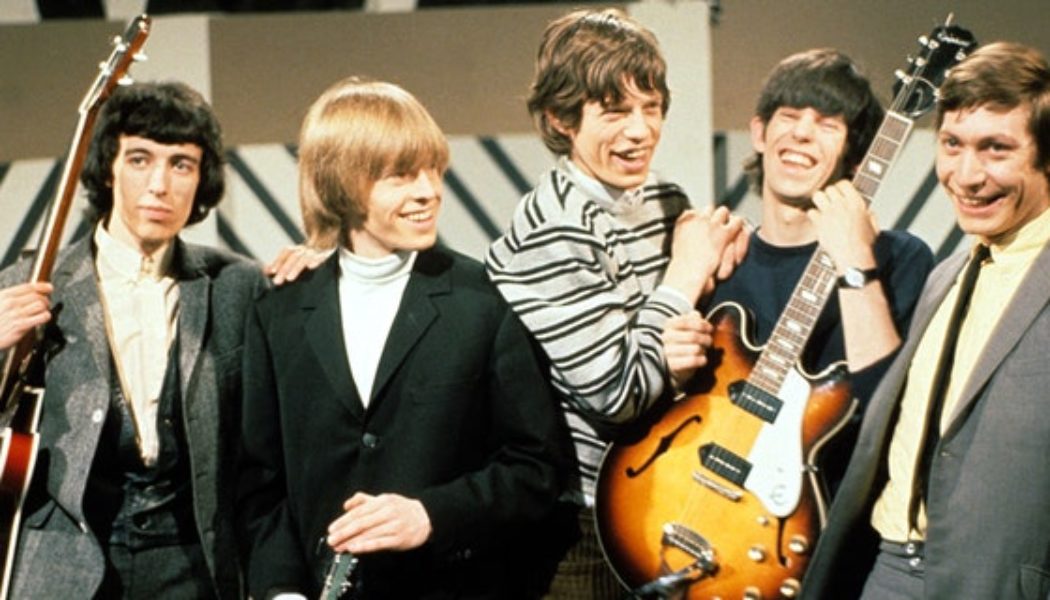The Rolling Stones, inspired by an incendiary buzzsaw riff that guitarist Keith Richards captured on tape in his sleep, recorded their sensational rock anthem “(I Can’t Get No) Satisfaction” on this day in history, May 12, 1965.
“The track is an electrified injection of rock and roll adrenaline,” enthuses U.K. outlet Far Out Magazine.
“It doesn’t stop for breath and instead powers through the air with a riff-fueled jetpack,” that outlet adds.
ON THIS DAY IN HISTORY, MAY 11, 1888, IRVING BERLIN, COMPOSER OF ‘GOD BLESS AMERICA,’ IS BORN
Released just four weeks later, “Satisfaction” became an international phenomenon.
It topped the U.S. charts for four weeks in the summer of 1965 and transformed Richards, his boyhood pal Mick Jagger and the rest of the Rolling Stones from upstart British Invasion blues band into global rock stars.
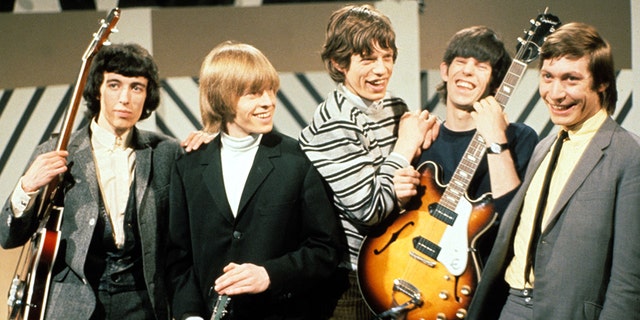
The Rolling Stones in a television studio in 1965 – Bill Wyman, Brian Jones, Mick Jagger, Keith Richards and Charlie Watts. (Michael Ward/Getty Images)
“To many, it is the quintessential rock song with its mix of fractured grammar (‘can’t get no’), its sense of rebellion and disillusionment, its anti-commercialism stance and, of course, its driving guitar riff,” the Library of Congress declared when it added the hit to the United States National Registry of Recordings in 2006
It was the first of eight No. 1 Billboard hits released by The Rolling Stones over the years, among the dozens of other chart hits and album-rock classics.
“The track is an electrified injection of rock and roll adrenaline.”
The riff to “Satisfaction” remains one of the most memorable in the history of music – yet its origins are forgotten by the guitarist who dreamed it.
Keith Richards was a fresh-faced 21-year-old former art school student in the spring of 1965.
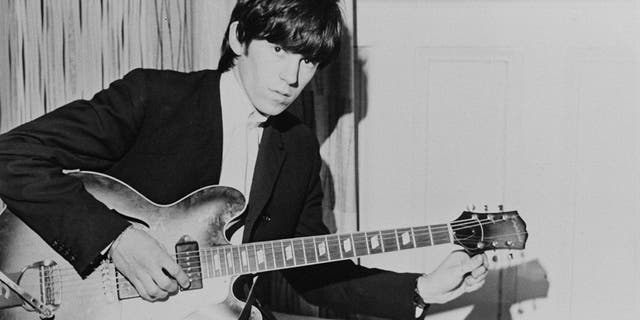
English guitarist Keith Richards of the Rolling Stones, circa 1965. (Keystone Features/Hulton Archive/Getty Images)
He awoke one morning to find the cassette tape he kept in a recorder by his bedside spooled to the end.
He rewound the tape and pressed play, and “a three-note guitar riff came blasting out of the speakers, followed by some basic chords and a simple refrain,” the website American Songwriter reports.
“’I can’t get no satisfaction,’ went the melody, sung by Richards in a sleepy, half-conscious voice. After several repetitions, the music faded out and gave way to 40 minutes of snoring,” the outlet adds.
The guitarist had apparently woken in the middle of the night, unconsciously recorded one of the most famous licks in rock history on acoustic guitar, and then fell back asleep with no memory of the incident.
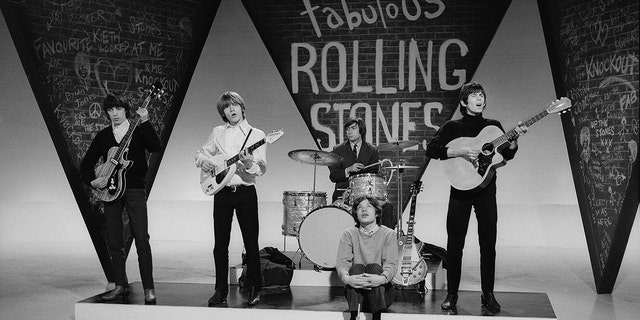
The Rolling Stones, left to right, Bill Wyman, Brian Jones, Charlie Watts, Mick Jagger and Keith Richards, rehearse for an appearance on a British TV show in 1965 in London, England. (Cyrus Andrews/Michael Ochs Archive/Getty Images)
The Rolling Stones laid down the track on May 12 at RCA Hollywood Studio, with Richards’ initial bare-bone refrain fleshed out by lyrics from Jagger.
“I’m tryin’ to make some girl, who tells me/Baby, better come back maybe next week,” he snarls in a fit of youthful angst.
“After several repetitions, the music faded out and gave way to 40 minutes of snoring.”
The overt references to sexual frustration, scandalous in the era, merely fueled the song’s mythic reputation.
It also earned the scorn of TV censors. The producers of “Shindig!” spliced out the raunchy lyrics in production.
MEET THE AMERICAN WHO INVENTED THE ELECTRIC GUITAR, INSPIRED ROCK ‘N’ ROLL
“It has a very catchy title. It has a very catchy guitar riff and a great guitar sound, which was original at that time,” Jagger said in a 1995 interview with Rolling Stone magazine.
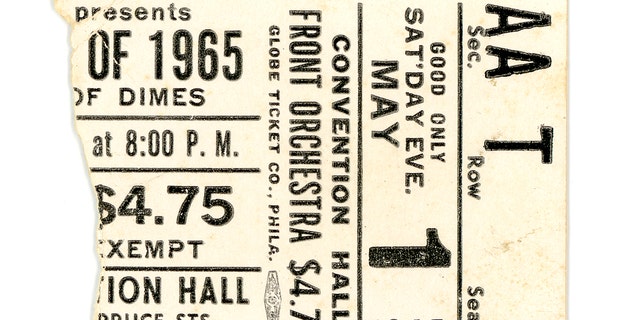
A front row ticket stub from the Rolling Stones first American tour of 1965, from May 1, at the Philadelphia Convention Hall and Civic Center in Philadelphia, PA. (Jeff Hochberg/Getty Images)
“And it encapsulated the feeling of the times, which was alienation. A sexual kind of alienation,” Jagger added.
Richards never intended his riff to make the recording — let alone rock history.
“Richards always assumed a horn section would play the song’s signature riff, even going so far as to use a Gibson Fuzz Box at RCA Studios to mimic the sounds of a saxophone,” writes American Songwriter.
“It was supposed to be a placeholder part, a scratch track, but the Fuzz Box gave the song a frantic, buzzing energy that everyone else seemed to prefer.”
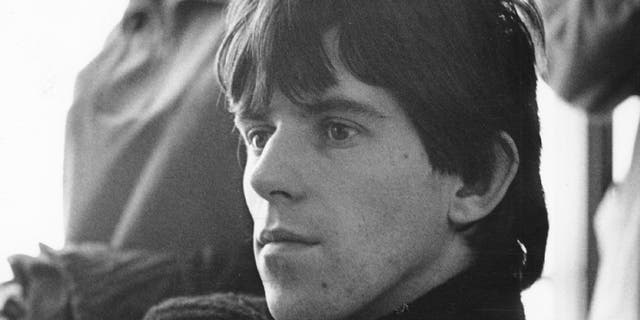
Guitarist Keith Richards of the rock band The Rolling Stones in a candid portrait at the New York Hilton on Oct. 28, 1965, in New York City. Richards wrote the band’s breakout hit “Satisfaction” in the spring of 1966. (Michael Ochs Archives/Getty Images)
The fuzz box effect not only stuck — it created a new rock sound. Gibson sold out of the gear before the year was out.
Otis Redding, meanwhile, recorded a horn-fueled version of “Satisfaction” later in 1965. Devo recorded a new-wave version in 1977.
The song made The Rolling Stones global superstars — a status they still enjoy today.
CLICK HERE TO GET THE FOX NEWS APP
The band celebrated 60 years of satisfying global crowds with a tour of Europe in 2022.
Planned 2023 North American dates have since been canceled.
No official reason has been given for the cancellation, with The Rolling Stones fan site It’s Only Rock ‘n’ Roll reporting that there may be some date rescheduling in the fall.
“His playing is idiosyncratic, loose, hard to copy … and the stuff of legend,” Guitar.com writes of rock god Richards, who turns 80 in December.
“Among all the colorful myths and legends of the life of Keith Richards it’s sometime easy to forget he’s actually a very good guitar player … and something of an innovator,” the outlet also said.

Keith Richards of the Rolling Stones performs live on stage during a concert of The Rolling Stones at the Johan Cruijff Arena on July 7, 2022, in Amsterdam, Netherlands. (Sven Hoogerhuis/BSR Agency/Getty Images)
“The fuzz tone had never been heard before anywhere, and that’s the sound that caught everybody’s imagination,” Richards wrote in “Life,” his 2010 autobiography.
CLICK HERE TO SIGN UP FOR OUR LIFESTYLE NEWSLETTER
The song’s success as the defining hit of the summer of 1965 taught the guitarist the value of teamwork in the creative process.
“I learned that lesson — sometimes you can overwork things,” Richards wrote.
“Not everything’s designed for your taste and your taste alone.”
